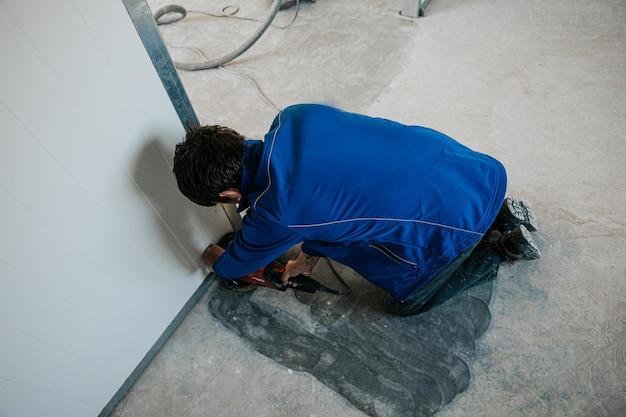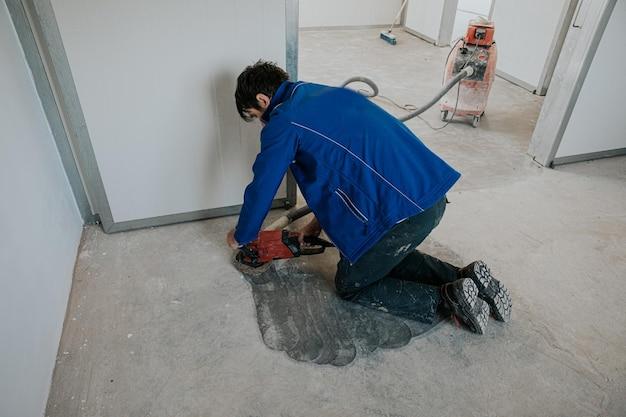Resin has become a popular choice for various DIY projects and crafts, thanks to its versatility and ability to create stunning, glossy finishes. However, working with resin can sometimes be a bit tricky, especially when it comes to the critical component known as hardener.
In this blog post, we will delve into the consequences of using resin without hardener, answer common questions like why your resin may not be hardening or why it’s still tacky even after curing, and provide solutions for fixing resin mishaps. So, if you’ve ever found yourself wondering what would happen if you forgot to add hardener to your resin or thought about cutting corners by skipping this crucial step, keep reading to find out the truth.
From preventing resin warping and understanding the difference between resin and hardener to troubleshooting rubbery or bendy resin, we’ll address a wide range of concerns. Whether you’re a beginner or an experienced resin artist, this comprehensive guide will equip you with the knowledge you need to achieve successful resin projects. So, let’s uncover what happens when you alter this delicate resin-hardener relationship and how to salvage your creations. Let’s dive in!
What Happens If I Use Resin Without Hardener
Resin is a versatile material that can be used for a variety of crafts and projects. It’s commonly used to create beautiful, durable pieces of art, jewelry, and furniture. However, using resin without hardener can lead to disastrous results. So, what actually happens if you decide to skip the hardener? Let’s dive into the sticky situation!
Say Goodbye to Proper Curing
When resin and hardener are combined, they undergo a chemical reaction that causes them to harden and solidify. The hardener is like the magic ingredient that activates the resin and turns it into a hard, durable material. Without the hardener, the resin will simply remain in its liquid state forever, never fully curing or hardening. You’ll be left with a sticky, gooey mess that never reaches its full potential.
Sticky Situations Ahead
One of the most immediate consequences of using resin without hardener is the sticky mess it creates. Since the resin won’t harden, it will remain tacky to the touch, attracting dust, dirt, and even the occasional unsuspecting fly. Your once-gorgeous project will turn into a magnet for all things unwanted, becoming a sticky nightmare that you just can’t shake off.
Brittle is the New Fragile
Even if by some miracle your resin without hardener manages to dry, it will still lack the strength and durability that the hardener provides. Without the proper chemical reaction, the resin will become brittle and prone to cracks and breakage. Imagine spending hours creating a beautiful resin art piece, only to have it shatter into a million pieces with the slightest touch. It’s a heart-wrenching experience you’d probably want to avoid.
Forever Stuck in a State of Uncertainty
Resin is known for its ability to preserve and encapsulate objects, creating stunning and unique pieces of art. However, without the hardener, your resin will never be able to fully encapsulate anything. The liquid state will trap any objects you try to encase, leaving them suspended in a forever-fluid, never-ending limbo. It’s like freezing a moment in time, but instead of preserving it beautifully, you end up with a murky mess.
Conclusion: Don’t Skip the Hardener!
In the resin world, the hardener is the unsung hero that brings the magic to life. It’s the missing piece of the puzzle that turns a liquid into a solid, a mess into a masterpiece. So, if you want your resin craft to be a success, don’t even think about using resin without hardener. Embrace the magical duo, follow the instructions, and let your resin creations shine with all their glory!
Remember, resin is a fickle substance that demands a clear set of rules to achieve its full potential. Don’t risk your time, effort, and sanity by skipping the hardener. Embrace the magic of the resin and hardener combo, and your projects will leave everyone in awe. Stay sticky-free, my friends!
FAQ: What Happens If I Use Resin Without Hardener
Resin is a versatile material used in various crafts and projects. However, using resin without hardener can lead to several issues and undesirable results. In this FAQ-style guide, we’ll address some common questions and concerns regarding the consequences of using resin without hardener. So, let’s dive right in!
How Do You Stop Resin Warping
When resin is used without hardener, it can lead to warping. To prevent this, always ensure that you mix the resin with the appropriate amount of hardener as per the manufacturer’s instructions. Proper mixing and curing times are crucial to maintaining the structural integrity of your resin projects.
Why Is My Resin Not Hardening
If your resin is not hardening, it could be due to the absence of hardener. Without the hardener, resin will typically remain in a liquid or semi-liquid state, preventing it from solidifying properly. Remember to always use the correct ratio of resin to hardener to ensure that your project sets correctly.
Why Is My UV Resin Still Tacky
UV resin is a popular choice for quick-curing projects. However, if it remains tacky after curing, it may be a symptom of using it without the necessary hardener. Without proper curing, the resin cannot fully harden, leading to that unpleasant sticky texture.
Does Tacky Epoxy Ever Cure
Tacky epoxy can be frustrating, especially when you’ve put time and effort into a project. However, if you’ve used resin without hardener, it may never cure entirely. The hardener plays a crucial role in the chemical reaction required for the epoxy to fully harden, so it’s essential to use the correct ratios.
Will Resin Go Hard Without Hardener
Resin cannot go hard without hardener. Hardener is the catalyst that triggers the chemical reaction necessary for resin to solidify and cure properly. Without it, the resin will remain in a liquid or gel-like form.
What Happens If You Use Resin Without Catalyst
Using resin without the necessary catalyst, or hardener, prevents the resin from curing correctly. The resin may remain sticky, tacky, or even in a liquid state indefinitely. It’s crucial to have the right balance of resin and hardener to achieve the desired results.
What Happens If You Put Too Much Hardener in Resin
Using too much hardener in resin can have adverse effects on your project. It can cause the resin to cure too quickly, leading to excessive heat generation and potential cracking. Additionally, it may result in a brittle final product. To avoid these issues, always follow the recommended ratio of resin to hardener.
Can You Overmix Resin
While thorough mixing is essential for resin projects, overmixing can introduce air bubbles, which can mar the final result. It’s best to follow the manufacturer’s guidelines on how long to mix resin and hardener to achieve a consistent blend without excessive air incorporation.
Why Is My Resin Rubbery
If your resin ends up with a rubbery or flexible texture, it could indicate a problem with the curing process. Using resin without hardener can lead to this unfortunate result. The hardener is necessary to trigger the chemical reaction that transforms the liquid resin into a solid, durable material.
How Much Hardener Do I Mix with Resin
The amount of hardener you mix with resin depends on the specific product you’re using. Always refer to the manufacturer’s instructions for the correct resin-to-hardener ratio. Following these guidelines ensures that the resin cures properly and achieves the desired hardness.
What’s the Difference Between Resin and Hardener
Resin and hardener are two separate components used in epoxy projects. The resin is the main ingredient and provides the structure, while the hardener acts as a catalyst, initiating the chemical reaction that causes the resin to harden. Without the hardener, the resin will not cure correctly.
How Do You Fix Resin That Didn’t Cure
Unfortunately, if resin doesn’t cure due to the absence of hardener, there’s no straightforward fix. You may need to remove the uncured resin and start the project over, ensuring the proper resin-to-hardener ratio. Properly following the manufacturer’s instructions is essential to avoid this issue.
Will Epoxy Cure without Enough Hardener
Epoxy requires the correct ratio of resin to hardener for proper curing. Without enough hardener, the epoxy may never fully cure. Using the recommended amount of hardener is crucial to ensure that your epoxy projects achieve their intended strength and durability.
Why Is My Resin Bendy after a Week
A bendy or flexible texture in resin after a week indicates that the resin didn’t cure properly. If you’ve used resin without hardener or used an incorrect ratio, the resin will remain in a partially cured state, resulting in a more flexible material rather than a rigid one.
Can You Cure Resin in the Oven
While some resins can be cured at higher temperatures, curing resin in the oven is generally not recommended unless the manufacturer specifically states it is safe to do so. Using an oven to cure resin can lead to overheating, unwanted bubbles, and potential damage to the oven itself.
How Do You Remove Tacky Epoxy
To remove tacky epoxy, you can try sanding it lightly with fine-grit sandpaper to remove the sticky outer layer. Alternatively, you can apply another layer of properly mixed resin with the appropriate hardener to encapsulate the tacky epoxy and allow it to cure fully.
Can I Epoxy Over Tacky Epoxy
Yes, you can epoxy over tacky epoxy, but only if you follow a few precautions. First, remove any surface contaminants or debris from the tacky epoxy. Then, mix and apply a fresh layer of epoxy resin with the necessary hardener. This will encapsulate the tacky layer and allow for proper curing.
Does Resin Have to Be Mixed With Hardener
Yes, resin must be mixed with hardener to ensure proper curing and achieve its desired properties. Hardener initiates the chemical reaction that transforms the liquid resin into a solid substance. Without the hardener, the resin will not harden or cure effectively.
Do You Need Catalyst for Resin
Yes, the hardener used with resin serves as the catalyst. It kickstarts the chemical reaction that allows the resin to solidify and harden. Without the catalyst, the resin will not cure, resulting in a sticky or uncured consistency.
We hope this FAQ section has provided valuable insight into the consequences of using resin without hardener. Remember, always follow the manufacturer’s instructions and use the correct resin-to-hardener ratio for successful resin projects. Happy crafting!

